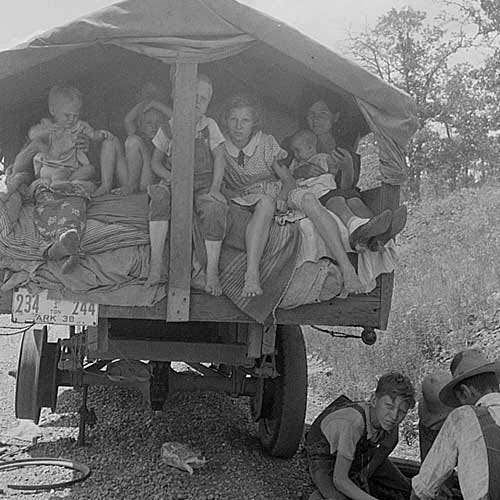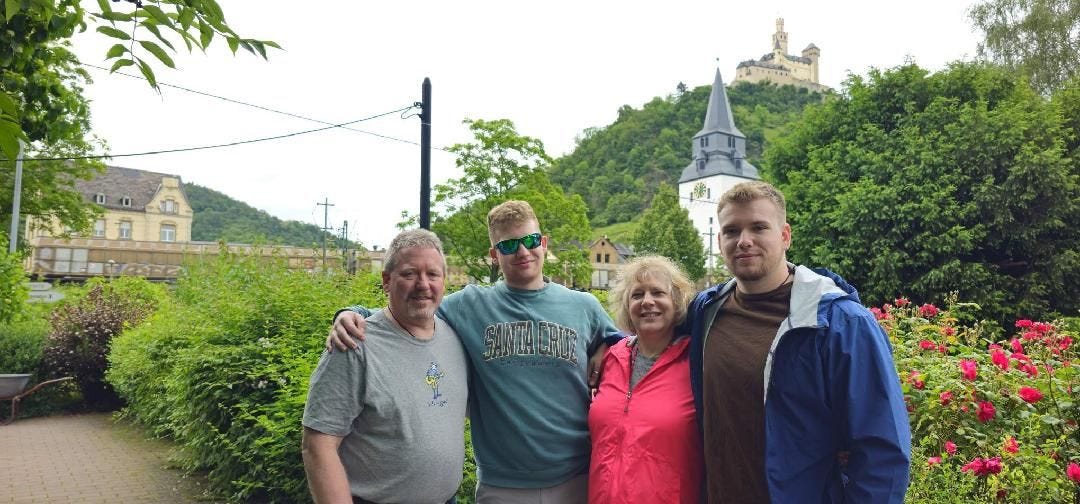
Because of his role running an incubator/accelerator for startups focused on resiliency in the face of the changing climate, my husband recently took a tour of a local research farm called Pie Ranch.
Pie Ranch practices regenerative agriculture, which is intended to restore and maintain healthy soil ecosystems on farmland. Some regenerative farmers don’t till the soil at all (it releases carbon into the atmosphere and dries out the soil), but at Pie Ranch they’ve discovered that shallow tilling every few years lets native plant roots survive and thrive, allowing grazing cows and roaming chickens to add natural fertilizer to the soil.
These practices are very different than the farming protocols that contributed to conditions in the Dust Bowl in the 1930s, when massive storms of dried out soil, called “black blizzards,” blanketed the states in the Great Plains and even turned day to night in places as far away as Chicago and New York City.
Unusually rainy years in the 1920s had encouraged people to take advantage of the cheap prairie land the US government was selling. Many believed the dry years were permanently over, buying into the erroneous real estate slogan that “rain follows the plow.”
With a poor understanding of the ecology of the region, many farmers plowed deep with the help of new machines. They killed the roots of the native grasses that served to trap soil and hold water. So, when drought conditions returned in the 1930s, the ubiquitous winds blew the topsoil away, destroying ecosystems, livelihoods, and lives.

The Dust Bowl affected 100 million acres, mainly in the panhandles of Oklahoma and Texas. Everyone who has read John Steinbeck’s The Grapes of Wrath (1939) knows that people were forced to emigrate to other parts of the country in search of work that was hard to find during the Great Depression. The federal government stepped in with programs to halt soil erosion and introduce conservation practices, but by the 1970s, big agricultural companies were using destructive methods that included draining aquifers for irrigation and the intensive use of pesticides and fertilizers.
We’ve been slow to learn from the lessons of the Dust Bowl. In the US, less than five percent of farms use cover cropping (a regenerative strategy), and we’re losing our soils ten times faster than they are replenished. We need more farmers farming like Pie Ranch, and we need it fast.
Sources:
National Drought Mitigation Center: https://drought.unl.edu/dustbowl/
Wikpedia: Dust Bowl
You Can Help
To help prevent future soil-related disasters, here are a few things you can do to support regenerative agriculture. The key takeaway is that our current industrial ranching practices, which includes planting crops to feed beef cattle, is destroying our soils and contributing to climate change. So, if you want to help…
Eat less meat and eat it less often.
When you do eat meat, buy it from regenerative farms.
Eat more plant-based foods.
Donate to regenerative agriculture research.
Learn about how a regenerative-based diet is healthier for you and for the planet here. Or, find out exactly how bad your hamburger is for the climate here.
History Today

“A Forgotten Piece Of African-American History On The Great Plains,” by Luke Runyon, tells the story of Dearfield, a thriving Black community in Eastern Colorado in the early years of the 19th century. Founded by a successful entrepreneur from Ohio who wanted to create a farming community and opportunities for Blacks, the town had a population of 700 at its height in the early 1920s. Despite racial violence in other parts of the country, Dearfield residents and their white neighbors got along well. The town was a success until the 1930s, when the Dust Bowl and Great Depression forced people to abandon it. Read the full article.
What I’m Watching
In his usual compelling fashion, documentarian Ken Burns uses photos, rare footage, and interviews with people who personally experienced the Dust Bowl to tell the story of the “worst man-made ecological disaster in American history,” including the massive storm dubbed “Black Sunday” that hit on April 14, 1935.
You can watch (free) clips from the film series here.
You Can Help
To help prevent future soil-related disasters, here are a few things you can do to support regenerative agriculture. The key takeaway is that our current industrial ranching practices, which includes planting crops to feed beef cattle, has is destroying our soils and contributing to climate change. So…
Eat less meat and eat it less often.
When you do eat meat, buy it from regenerative farms.
Eat more plant-based foods.
Donate to regenerative agriculture research.
Learn about how a regenerative-based diet is healthier for you and for the planet here. Or, find out exactly how bad your hamburger is for the climate here.
Origin Stories
Herr Family in Germany, May 2024 (from left: Wayne, Alex, Amy, Will). My sister and brother-in-law have taken their two sons on a river cruise down the Rhine to explore the country that was home to ancestors on both sides of both their families. Our parents’ ancestors came from Alsace, which has ping-ponged between France and Germany for centuries while managing to retain a distinct cultural identity. Today, our maternal grandfather’s ancestral town of Ettendorf is located in France, not far from the Rhine. We can trace the Wind line back to a John Wind (b. 1785) who married Madeleine Lutz (b. 1818). It would be nice to know more than the fact of their (creepy!) 33-year age difference.






During a recent trip to Nashville we heard a lot about no-till farming. Farms that use no-till practices lose significantly less soil during heavy rains. They believed that there would not be a farming industry in Tennessee if they hadn’t changed their practices. Interesting stuff. Thank you Heidi!
Farmers in the 1970s were encouraged by the USDA Agriculture Secretary Earl Butz to plant “from fencerow to fencerow” and to “get big or get out.” Yields went up in the first few years, then have been declining ever since. Your Living With History conveys a very important message ... again. Thank you.